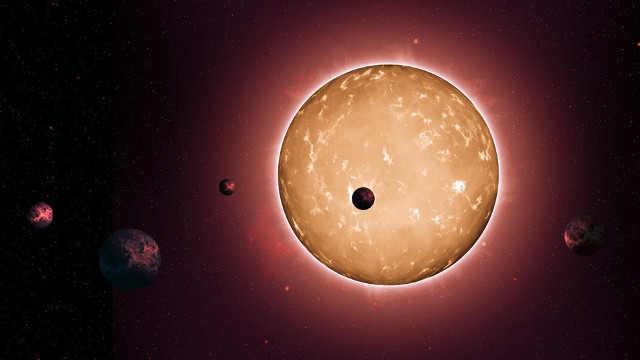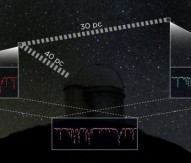
New circular orbit discovery helps search for life
A new analysis has suggested that the Solar System’s circular orbits are the norm, at least for systems with planets as small as Earth.
The new analysis, part-funded by the European Research Council, is in contrast to the original thoughts of astronomers who have wondered whether the Solar System’s circular orbits might be a rarity in our Universe.
Researchers from the Massachusetts Institute of Technology in the USA and Aarhus University in Denmark report that 74 exoplanets, located hundreds of lightyears away, orbit their respective stars in circular patterns, much like the planets of our Solar System.
These 74 exoplanets, which orbit 28 stars, are about the size of Earth, and their circular trajectories stand in stark contrast to those of more massive exoplanets, some of which come extremely close to their stars before hurtling far out in highly eccentric, elongated orbits.
Commenting, Vincent Van Eylen, a visiting graduate student in MIT’s department of physics, said: “20 years ago, we only knew about our Solar System, and everything was circular and so everyone expected circular orbits everywhere. Then we started finding giant exoplanets, and we suddenly found a whole range of eccentricities, so there was an open question about whether this would also hold for smaller planets. We find that for small planets, circular is probably the norm.”
Ultimately, Van Eylen says, that’s good news in the search for life elsewhere. Among other requirements, for a planet to be habitable, it would have to be about the size of Earth — small and compact enough to be made of rock, not gas. If a small planet also maintained a circular orbit, it would be even more hospitable to life, as it would support a stable climate year-round.
In contrast, it is considered that a planet with a more eccentric orbit might experience dramatic swings in climate as it orbited close in, then far out from its star.
“If eccentric orbits are common for habitable planets, that would be quite a worry for life, because they would have such a large range of climate properties,” Van Eylen says. “But what we find is that we probably don’t have to worry too much because circular cases are fairly common.”
This research is published in the Astrophysical Journal.




